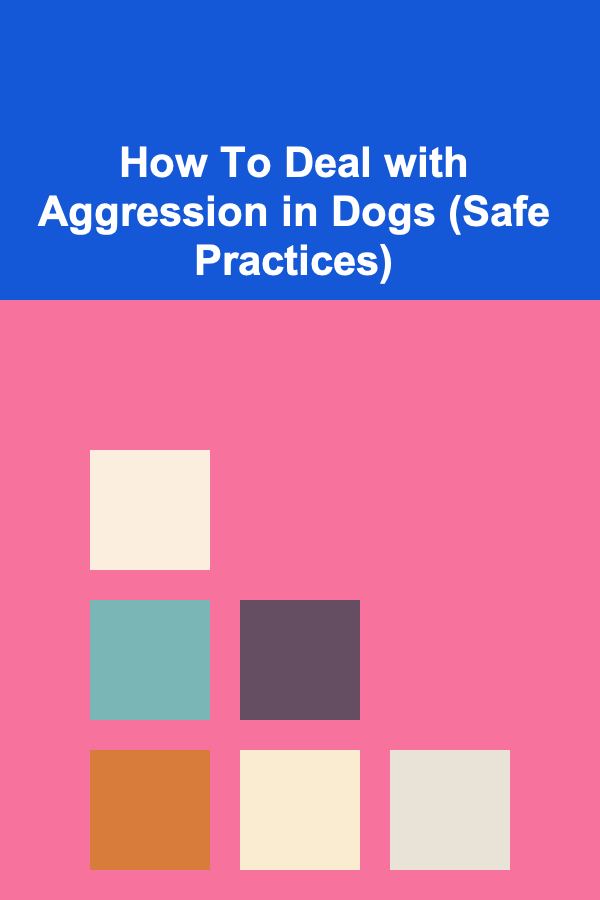
How to Nurture Relationships with Potential B2B Dropshipping Partners on LinkedIn
ebook include PDF & Audio bundle (Micro Guide)
$12.99$8.99
Limited Time Offer! Order within the next:

LinkedIn is more than just a platform for job seekers and recruiters; it's also an invaluable tool for businesses looking to connect with potential partners, including those in the B2B dropshipping space. Building and nurturing relationships on LinkedIn can lead to fruitful partnerships, increased business opportunities, and long-term success. However, it requires a strategic approach to stand out in a sea of networking attempts and to build genuine, valuable relationships. This guide explores actionable steps to nurture relationships with potential B2B dropshipping partners on LinkedIn.
Optimize Your LinkedIn Profile for Business Relationships
The first step in successfully nurturing relationships on LinkedIn is having a profile that clearly communicates who you are, what your business offers, and how you add value. Since potential dropshipping partners are likely to check your profile before engaging with you, it's important that your profile makes a professional and compelling impression.
1.1. Craft a Compelling Headline
Your headline is the first thing people see when they come across your profile. It should be more than just your job title---it should tell potential partners who you are and what you offer. Consider using a headline like:
- "Helping Businesses Grow Through Reliable B2B Dropshipping Partnerships"
- "Connecting Entrepreneurs with High-Quality Dropshipping Suppliers"
- "Your Go-To Source for Profitable B2B Dropshipping Solutions"
This immediately communicates your business focus and sets the tone for meaningful engagement.
1.2. Write a Persuasive Summary
The summary section of your LinkedIn profile should provide a snapshot of your expertise and what you bring to the table. Focus on your unique selling proposition (USP) and highlight how your dropshipping services solve common problems for businesses. Ensure the language is professional, yet approachable, and ends with a call to action, inviting potential partners to reach out for collaboration.
Example Summary: "As a B2B dropshipping expert, I work with businesses to streamline their e-commerce operations by providing access to top-tier suppliers, high-quality products, and efficient fulfillment services. My goal is to build mutually beneficial partnerships that help businesses scale without the hassle of inventory management. Let's connect if you're interested in exploring how we can grow your business together."
1.3. Include Recommendations and Endorsements
Recommendations and skill endorsements lend credibility to your profile. Request recommendations from current clients or collaborators who can speak to the value you bring as a B2B dropshipping partner. Similarly, ensure that your key skills---such as logistics, e-commerce strategy, and supplier relations---are endorsed by others in your network.
Start with Meaningful Connection Requests
Once your profile is optimized, it's time to connect with potential dropshipping partners. While it might be tempting to send out mass connection requests, this approach rarely works for building lasting relationships. Instead, take a more personalized and thoughtful approach.
2.1. Personalize Your Connection Request
Rather than sending the default LinkedIn connection request, always include a personalized message. This message should introduce who you are, why you're interested in connecting, and how you can help. For example:
Example Connection Request: "Hi [Name], I came across your profile and noticed your expertise in the e-commerce space. I specialize in B2B dropshipping partnerships and believe that there may be an opportunity for us to collaborate. I'd love to connect and explore how we can create value for your business. Looking forward to hearing from you!"
2.2. Avoid Sales Pitches in the First Message
While you may be eager to start a partnership, avoid jumping straight into a sales pitch. Instead, focus on building rapport and establishing trust. Aim to initiate a conversation and show genuine interest in their business. If they respond positively, you can gradually move the conversation towards partnership opportunities.
Engage with Content Strategically
One of the most effective ways to nurture relationships on LinkedIn is through consistent and meaningful engagement. By sharing valuable content and interacting with posts from potential partners, you build rapport and visibility in a non-intrusive way.
3.1. Share Valuable Content
Position yourself as a thought leader in the B2B dropshipping space by regularly posting relevant content. This could include:
- Articles on dropshipping best practices
- Case studies highlighting successful B2B partnerships
- Industry news or trends related to e-commerce and dropshipping
Make sure your content is educational, insightful, and provides value to your network. This will attract potential partners who are looking for someone with knowledge and expertise in the dropshipping industry.
3.2. Comment on and Engage with Potential Partners' Posts
Engagement on LinkedIn isn't just about posting your own content; it's also about interacting with posts from your potential partners. Liking, commenting, and sharing their posts shows that you're genuinely interested in their content and helps foster a connection. Aim to leave thoughtful comments that add value to the conversation, demonstrating that you understand their business and the challenges they face.
Example Comment: "Great insights, [Name]. I completely agree that finding the right suppliers is crucial for scaling a dropshipping business. Have you explored any new platforms recently that focus on high-quality products?"
3.3. Join Relevant LinkedIn Groups
LinkedIn Groups provide a platform for like-minded professionals to share ideas, ask questions, and collaborate. Join groups related to e-commerce, dropshipping, and supply chain management, where potential B2B partners are likely to be active. Participate in discussions and offer value through your expertise. This positions you as an expert and increases the likelihood of building relationships with potential partners.
Build Trust Through Consistent Communication
Once a potential partner connects with you, it's crucial to nurture that relationship through consistent and genuine communication. Trust is the foundation of any successful partnership, so avoid being overly sales-focused and instead focus on offering support, resources, and value.
4.1. Send Follow-Up Messages
After an initial connection, send a follow-up message thanking them for connecting and offering something valuable, such as an insightful article or a helpful resource. This isn't the time to pitch your services, but rather to continue building a relationship.
Example Follow-Up Message: "Hi [Name], thanks for connecting! I came across this article on the latest trends in B2B dropshipping and thought you might find it useful. Let me know what you think! I'd also be happy to chat if you'd like to explore how we can collaborate."
4.2. Share Insights and Solutions
As you continue to build rapport, you may begin to understand their business needs or pain points. Share solutions, insights, or suggestions that could help them improve their business operations. For example, if they express challenges with their current dropshipping suppliers, offer insights into how you can help with better quality products or more reliable logistics.
4.3. Offer Value Through Free Resources or Trials
Offering free trials, resources, or consultations is a great way to provide value upfront without expecting immediate returns. For example, offer a free consultation on optimizing their dropshipping operations, or provide access to a valuable tool or resource that can help streamline their business processes.
Move Towards Partnership Discussion
As your relationship develops, you'll eventually want to transition the conversation into a more formal discussion about potential partnerships. This is where your approach becomes more direct but should still prioritize mutual benefit.
5.1. Identify Mutual Benefits
Before jumping into a partnership proposal, ensure that both parties understand the benefits of working together. Ask questions about their goals, challenges, and priorities, and tailor your proposal to address their specific needs. For example:
- "I noticed that you've been focusing on expanding your product range. Our platform offers a wide variety of high-quality suppliers that could help you achieve that goal."
- "If you're looking to scale your business without managing inventory, I'd love to discuss how we can handle your fulfillment needs."
5.2. Schedule a Call or Video Meeting
Once you've established a strong rapport and identified mutual benefits, schedule a call or video meeting to discuss the partnership in more detail. This is a crucial step in transitioning from a LinkedIn relationship to a formal business collaboration. Prepare for the meeting by researching their business and coming up with a tailored proposal.
5.3. Be Transparent and Professional
During the partnership discussions, be transparent about your business processes, pricing, and the ways in which you can help. Avoid overselling or overpromising. Instead, be clear about what you can deliver and how your dropshipping services align with their business goals.
Conclusion
Nurturing relationships with potential B2B dropshipping partners on LinkedIn is an ongoing process that requires patience, consistency, and genuine engagement. By optimizing your profile, personalizing your outreach, sharing valuable content, and maintaining open communication, you can build meaningful connections that lead to mutually beneficial partnerships. Building trust and offering value should always be at the forefront of your efforts, as these are the key elements that will drive long-term success in the world of B2B dropshipping.

Becoming a Successful User Interface Designer: Strategies for Effective UI Solutions
Read More
How to Build a Checklist for Book Club Meeting Invitations: An Actionable Guide
Read More
How to Incorporate Energy-Efficient Lighting into Your Home
Read More
How To Master Grid Systems for Organized Layouts
Read More
How To Deal with Aggression in Dogs (Safe Practices)
Read More
How to Handle Unexpected Tasks on Your Business To-Do List
Read MoreOther Products

Becoming a Successful User Interface Designer: Strategies for Effective UI Solutions
Read More
How to Build a Checklist for Book Club Meeting Invitations: An Actionable Guide
Read More
How to Incorporate Energy-Efficient Lighting into Your Home
Read More
How To Master Grid Systems for Organized Layouts
Read More
How To Deal with Aggression in Dogs (Safe Practices)
Read More